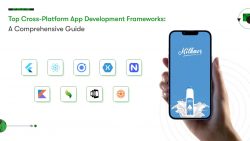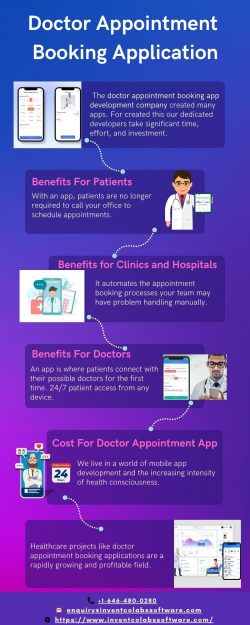Native vs. Cross-platform App Development: Pros and Cons
Mobile app development has become a crucial aspect of business strategies in today’s digital age. When it comes to developing mobile applications, there are two primary approaches: native app development and cross-platform app development. Each approach has its own set of advantages and disadvantages, and choosing the right one is essential for the success of a mobile app. In this article, we will explore the pros and cons of native vs. cross-platform app development and discuss the importance of choosing the right approach for your specific project.
A. Native App Development: Crafting Tailored Experiences
Native app development entails creating applications tailored explicitly for a specific platform or operating system, such as iOS or Android. These apps are written using platform-specific programming languages and tools, ensuring high performance and seamless integration with the device’s features and functionalities.
B. Cross-platform App Development: One Codebase, Multiple Platforms
Cross-platform app development enables developers to build applications that can run on multiple platforms using a single codebase. Frameworks and technologies facilitate writing code once and deploy it across different platforms, reducing development time and resources.
C. Importance of Choosing the Right Approach
Choosing the right approach for app development is crucial as it directly impacts the performance, user experience, development time, and cost of the project. Understanding the pros and cons of each approach is essential for making an informed decision that aligns with the project’s requirements and goals.
II. Native App Development
Native app development offers several advantages that make it a preferred choice for many developers and businesses.
A. Pros
1. Performance and Speed: Native apps are known for their high performance and fast response times as they are optimized to leverage the full potential of the device’s hardware and software.
2. Access to Native Features: Developers have access to a wide range of native features and APIs provided by the platform, allowing them to create seamless integrations and deliver rich user experiences.
3. Better User Experience: Native apps provide a consistent and intuitive user experience, thanks to their platform-specific design guidelines and smooth navigation.
4. Platform-Specific Design and Feel: Native apps can be tailored to match the design principles and user interface patterns of each platform, resulting in a more cohesive and familiar user experience for the target audience.
B. Cons
1. Higher Development Cost: Building separate codebases for each platform can lead to higher development costs, especially when considering the need for platform-specific expertise.
2. Longer Development Time: Developing separate versions of an app for different platforms increases the overall development time, delaying time-to-market.
3. Maintenance for Multiple Codebases: Maintaining and updating multiple codebases for different platforms requires additional resources and can be challenging to manage in the long run.
4. Limited Audience Reach: Targeting a single platform with a native app may limit the potential audience reach compared to cross-platform solutions.
III. Cross-platform App Development
Cross-platform app development offers its own set of advantages, making it an attractive option for businesses looking to reach a broader audience while optimizing development resources.
A. Pros
1. Cost-Effective Development: Building a single codebase for multiple platforms reduces development costs and resources, making it a cost-effective solution for businesses with budget constraints.
2. Faster Time to Market: With a shared codebase, cross-platform apps can be developed and deployed more quickly, allowing businesses to reach their target audience faster.
3. Single Codebase for Multiple Platforms: Developers can write code once and deploy it across multiple platforms, streamlining the development process and reducing duplicative efforts.
4. Broader Audience Reach: Cross-platform apps enable businesses to target users across different platforms, maximizing their audience reach and potential user base.
B. Cons
1. Performance and Speed Limitations: Cross-platform apps may experience performance limitations compared to native apps due to abstraction layers and platform differences.
2. Limited Access to Native Features: Access to certain native features and functionalities may be limited in cross-platform development, impacting the overall user experience.
3. Compromised User Experience: Achieving a consistent user experience across multiple platforms can take time and effort, leading to potential compromises in design and functionality.
4. Potential Compatibility Issues: Cross-platform apps may face compatibility issues with different devices, screen sizes, and operating system versions, requiring additional testing and optimization efforts.
IV. Factors to Consider When Choosing Between Native and Cross-platform Development
When deciding between native and cross-platform app development, several factors should be taken into consideration to ensure that the chosen approach aligns with the project’s requirements and goals.
A. Project Requirements and Goals: Understanding the specific needs of the project, such as performance, user experience, and target platforms, is essential for selecting the most suitable development approach.
B. Target Audience and Market: Analyzing the target audience’s device preferences and platform usage can help determine whether native or cross-platform development is better suited for reaching the intended users.
C. Budget and Timeline Constraints: Evaluating the available budget and project timeline is crucial for making a cost-effective decision that meets the project’s financial and time constraints.
D. Available Development Resources and Expertise: Assessing the availability of development resources, including skills, tools, and expertise, is important for determining the feasibility of native or cross-platform development for a specific project.
V. Case Studies and Examples
To further illustrate the impact of native and cross-platform app development, it is valuable to examine successful cases and examples of both approaches.
A. Successful Native App Development Cases: Examples of native app success stories, such as popular apps with exceptional performance and user experience on specific platforms, can demonstrate the benefits of native development.
B. Successful Cross-platform App Development Cases: Case studies of successful cross-platform apps that have effectively reached a broad audience while managing performance and user experience challenges can provide insights into the advantages of cross-platform development.
Final Thoughts
The choice between native and cross-platform app development depends on various factors such as project requirements, budget constraints, performance expectations, and customization needs. By understanding the differences between these approaches and considering key considerations during the development process, businesses can make informed decisions that lead to successful mobile app projects. Partnering with a trusted mobile app development company like Sigma Solve can further enhance your journey towards creating impactful mobile experiences for your users.

































































